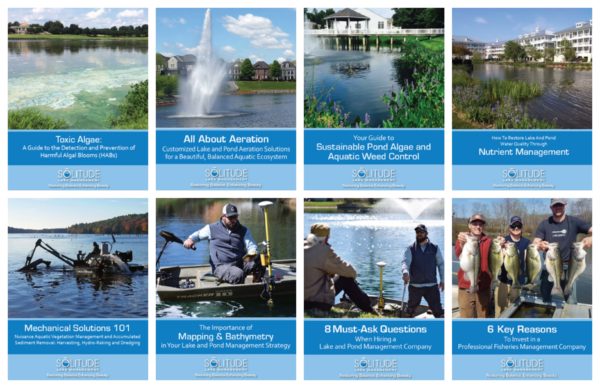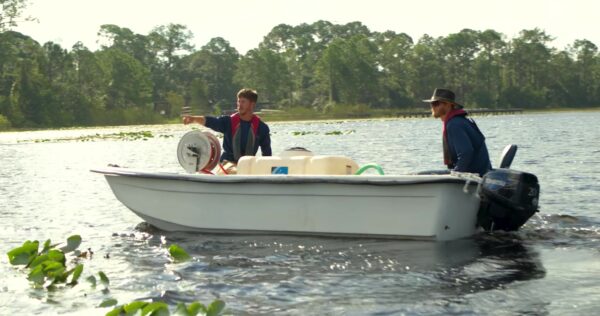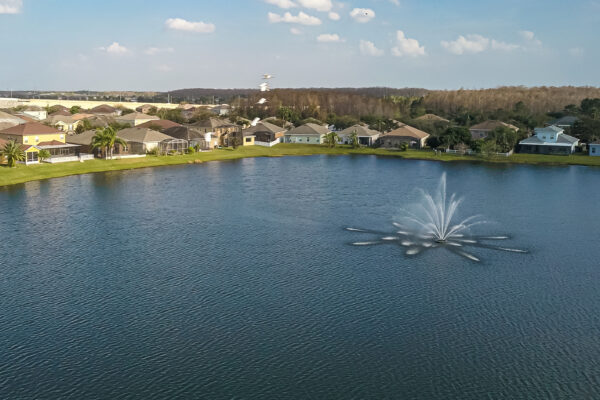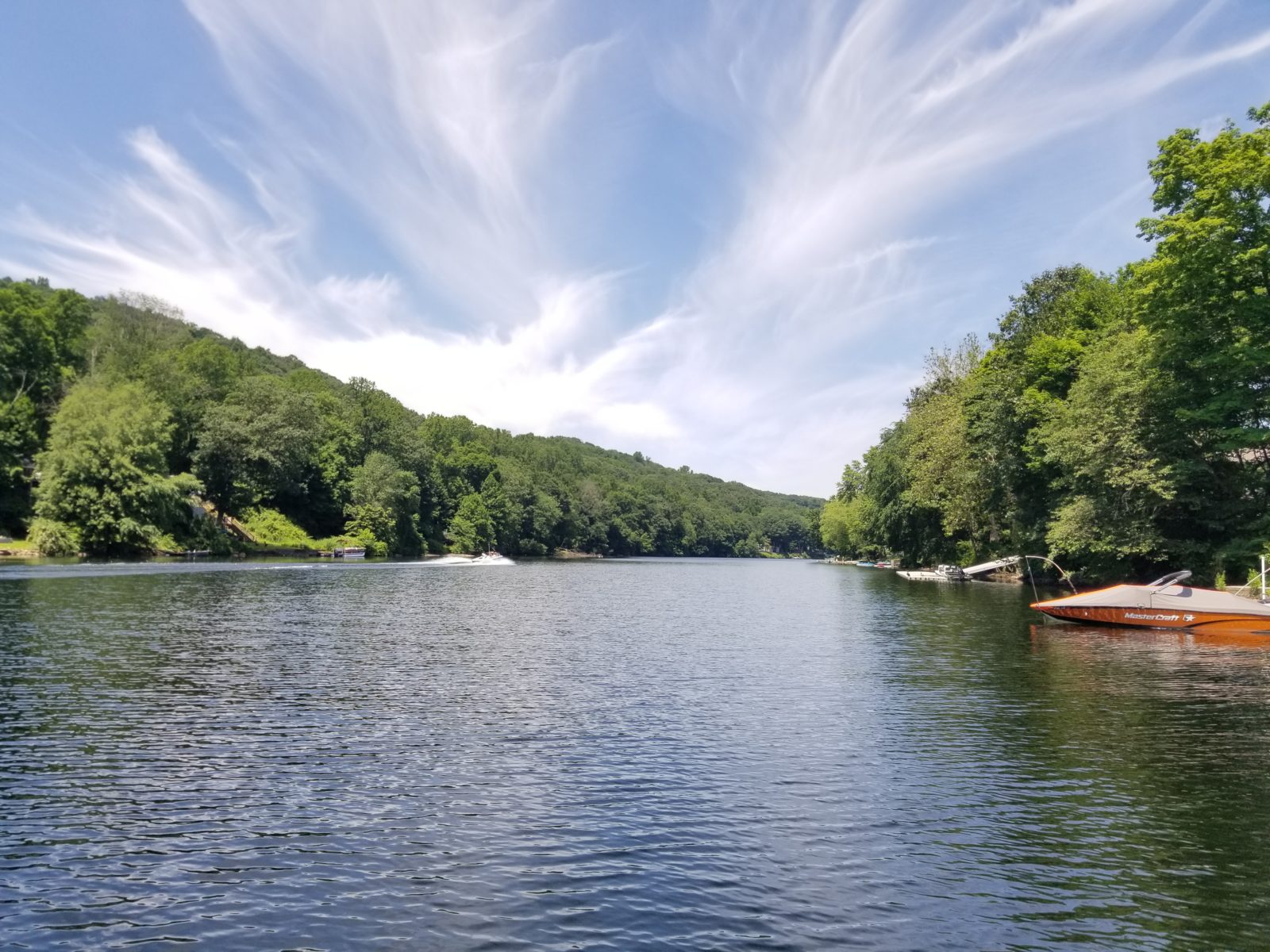School of Hard Knocks: You Can’t Control Mother Nature
August 21st, 2012
AS SEEN IN “THE DIRT”, LAND & WATER MAGAZINE’S eNEWSLETTER, August 21, 21012: Written by Industry Expert John Phelps, Environmental Scientist
 I have a client that owns a typical shopping center; department stores, large parking lot and a 15 year old 1.5 acre retention basin which collects all the stormwater for the property. The basin was aging and neglected, the steel piping had corroded and was failing at the inlet and outlet, and too much sediment had accumulated. Everyone agreed that there was a need to remediate the deficiencies before they worsened.
I have a client that owns a typical shopping center; department stores, large parking lot and a 15 year old 1.5 acre retention basin which collects all the stormwater for the property. The basin was aging and neglected, the steel piping had corroded and was failing at the inlet and outlet, and too much sediment had accumulated. Everyone agreed that there was a need to remediate the deficiencies before they worsened.
It took over a year of planning. There was engineer design work needed to update the facility components, state and local permits and approvals were needed for the activities to take place, and it took my client some time to realize that he could not delay the work any longer–that it would only get worse and more expensive over time.
Finally, after many meetings, multiple contract revisions, and a pre-construction meeting the remediation work was going to take place. The weather was cooperating. The summer of 2011 was dry and conditions at the basin were ideal for the needed excavation, repairs and grading. The work took four days and went off without a hitch (see attached picture of just completed work near inlet).
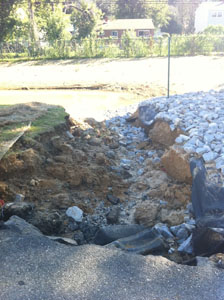 All areas were stabilized, the local conservation district approved and signed off, we cleaned up and the job was done…or so I thought.
All areas were stabilized, the local conservation district approved and signed off, we cleaned up and the job was done…or so I thought.
The work was completed on a Friday. The weekend started off nice, but quickly the sky opened up and the region received a drought busting rain. It rained and rained and rained and all weekend I was concerned about the retention basin. The steep slopes had just been seeded. What would it look like on Monday I wondered?
Sure enough, first thing Monday morning I got a call from a colleague who had come from the site. The news was not good. The rains and sheet flow had eroded an area near the newly replaced inlet pipes. A ten foot deep by ten foot wide gully had opened up and all that soil was now down in the basin (see picture). !?X@!
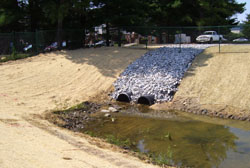 I called my client to give him the unfortunate news, but assured him once it stopped raining we would get back out there with the equipment and fix the new problem. It rained for another two weeks and the gully kept getting larger, but the conservation district and client understood there was nothing we could do but wait. Fortunately in the budget I had accounted for touch up work. While the additional work was more than a touch up, it had to be done to provide my client with the end product he paid for. It only took an afternoon to excavate the soil in the basin, grade the embankments, and stabilize the area. Mother nature gave us a break and the grass was able to grow.
I called my client to give him the unfortunate news, but assured him once it stopped raining we would get back out there with the equipment and fix the new problem. It rained for another two weeks and the gully kept getting larger, but the conservation district and client understood there was nothing we could do but wait. Fortunately in the budget I had accounted for touch up work. While the additional work was more than a touch up, it had to be done to provide my client with the end product he paid for. It only took an afternoon to excavate the soil in the basin, grade the embankments, and stabilize the area. Mother nature gave us a break and the grass was able to grow.
The site now looks great, is functioning properly and my client is happy. I learned a valuable lesson from that job: you can’t control mother nature, but you can account for possible curve balls she might throw you.
Contact the experts at 888-480-5253 for all of your lake, pond and fisheries management needs.
John Phelps is an Environmental Scientist with SOLitude Lake Management. Since 1998, SOLitude Lake Management has been committed to providing full service lake and pond management services that improve water quality, preserve natural resources, and reduce our environmental footprint. Services are available throughout the Eastern United States. Fisheries management consulting and aquatic products are available nationwide. Learn more about SOLitude Lake Management and purchase products at www.solitudelakemanagement.com.



